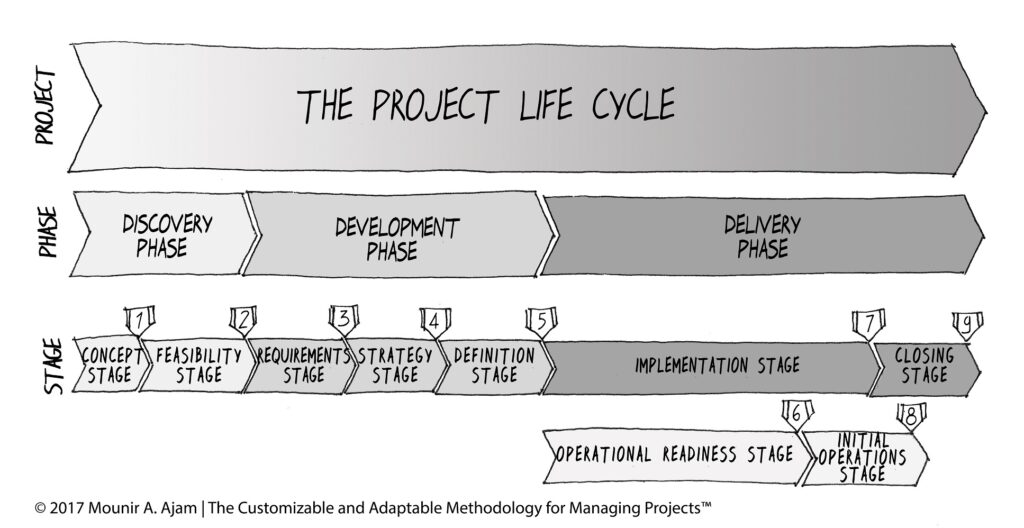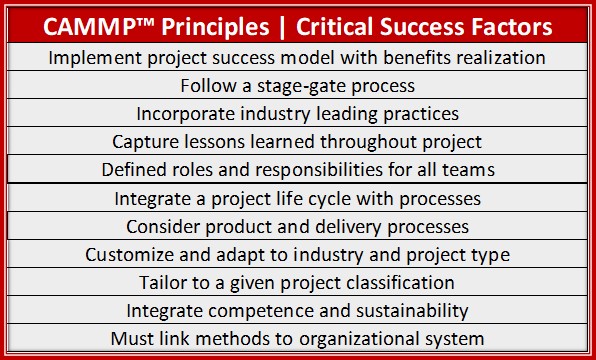Since 2007, we in SUKAD has been advocating the necessity for organizations to develop or adopt a project management methodological approach. A project management methodology that is an essential component of the organizational project management system. Further, we often hear about predictive versus adaptive project management methods. We read the debates on Waterfall versus Agile. Some practitioners debate these topics, and Agilists promote that Agile is better than waterfall. However, these professionals do not recognize that neither Agile nor Waterfall are project management methodologies. Therefore, a set of relevant questions we often here is
How do we define a Project Management methodology? Is the definition limited to a project life cycle? Or are there other factors and considerations?
The Root Cause
This is an interesting question.
I know that we have addressed these relevant questions in past blog articles. We even have a series of videos on the subject.
Here is the root cause of the confusion.
We, as project management practitioners, do not agree on the definition of a project. Further, we lost the perspective that project management has always or should be adaptive. Therefore, concepts like adaptive, predictive, agile, waterfall methods are new inventions. Unfortunately, we think what driving these terms is the drive to sell certifications. I have lost count of how many agile “methods” and certifications that are out in the market.
Why is it challenging to define “project”?
Many professional associations have defined the term “project.” The challenge with that is the desire to keep the definition short, like one sentence. As a result, practitioners end up with different interpretations and choose what suits them.
For example, is construction work a project or a phase? Is the software development work a project or a phase? Is cooking dinner for your family a project or a task?
We can debate these various questions, but that means trying to force a unique answer. We choose an alternative route, which is to accept that the definition is situational, hence the need to define it, at least in the SUKAD Way™ context.
What is the definition of a project?
Here are the general points we use to define a project:
- A project could be anything we create from scratch or a significant modification to an existing system, which would require substantial effort in terms of development and delivery.
- A project has a specific product (output), objectives (outcome), defined timeline (schedule), budget, and various other parameters (resources, quality, risks, etc.).
- It is an investment of time and money to deliver a product or service (output), and it must provide the capabilities to enable the realization of benefits (outcome).
- The project owner can verify and accept the output at completion and closeout but often cannot validate the outcome until months or years after the end of the physical work.
- A project can be independent or part of a program. If it is part of a program, then it must align with the program objective, which in turn, must align with the organizational strategic direction. On the other hand, if the project is independent of a program, then it must directly align with the organizational strategic direction.
The definition is from Mounir’s Leading Megaprojects, A Tailored Approach.
What is not a project?
These are the things that we do not consider a project.
- A routine task that can be accomplished in hours or days by one or more people
- A phase or stage of the project (a piece of it, usually along the project life cycle)
- A sub-project (also a piece of a project, could be different parts or sections of a facility)
- A program or a portfolio
So, is cooking dinner a project?
Theoretically, the answer could be yes, if we limit the definition to output and ignore the other factors, outcome, objectives, significant effort to plan and implement, often a one-person job, etc.
Anyway, it is up to you to define what a project for you. However, if you do not want to be trivial, then we advise another look at the definition that we presented.
What is a project management methodology?
For convenience, we might be using the terms method and methodology interchangeably. Click here for an explanation of the differences.
To answer this question, first, we need to offer a few clarifications. Therefore, separate the concept of a Project Management Method from Stage Management or a method that can be used on projects. Let me clarify:
- EVM (Earned Value Management) is a method (or technique) that can be used on projects.
- CPM (Critical Path Method) is also a method that can be used on projects.
- However, neither is a project management method (a method that can be used to manage the whole project).
- The same thinking applies to Agile. There are Agile “Methods” that can be used on projects, usually in the development phase of the project.
Therefore, just because we use a method or technique on projects, that does mean the method is a project management method, per our definition. Finally, on this point, a few more thoughts: we use leadership skills on projects. We use financial modeling, market research, business analysis, engineering, programming, and many other things. Just because we use these on projects, that does not make them project management methods.
So, what makes a method, a Project Management Method?
With the above background and context, here is what we believe are the components of a project management method or methodological approach.
- It must be for the whole project, covering the management from the concept/idea to closure.
- Therefore, it has a vital foundation, which is a PLC, Project Life Cycle.
- The PLC will have stages (or phases or both).
- Each stage has an objective to accomplish—for example, the concept stage is to define the concept and business case. A feasibility stage to produce a feasibility study report. Further, there will be a stage for business requirements, another for detailed project definition, engineering, etc. Therefore, each stage has an output.
- The output of the stage should go through a stage gate (SG), decision point, decision review, the name could vary.
- At the SG, the sponsor, steering committee, management will decide whether to approve, hold, or reject the work. Rejecting the work lead to stopping the project. On the other hand, approval likely leads to the next stage.
The above are the core component of a Project Management Methodology, like the skeleton of the human body. Further, like the human body, other things will characterize the PM Method. Therefore, for a PM Method, there will be many other details, such as principles, critical success factors, policies, etc.
Project Management Methodology, an Example
It is well known that SUKAD has CAMMP, The Customizable and Adaptable Methodology for Managing Projects™. There are other project management methods in the market, like PRiSM from GPM Global and PRINCE2. We know that many of our regular readers have seen the CAMMP Standard Model, which is next.

We also know that some readers have seen the next image, which is in line with the previous image but includes iterative or incremental development.

What characterizes a project management method?
Earlier I wrote “like the human body, other things will characterize the PM Method.” What does this mean?
It means some or all of the following:
- The roles and responsibilities of the people involved could vary based on organizational policies and preferences.
- The PLC is highly dependent on the type of project.
- The number and names of the stage gates and stages may vary.
- The criteria for project success may also vary.
- The methodological approach is also affected by the size and complexity of the project.
So, many factors affect the definition and use of a project management method. However, we must honor the components that we mentioned earlier (PLC, Stages, Deliverables, Stage Gates) and consider some principles. The next image is the CAMMP Principles (or Critical Success Factors), which could have similarities with other methods.

Closing Comments
What triggered this post is a discussion on “Agile Project Management” and whether Agile, AgilePM, Disciplined Agile, SAFe, and other concepts are project management methods. We documented our views, at length, in a recent e-book. However, I think it is clear from the above that Agile is NOT a project management method. It is an approach that we can use for incremental or iterative development during the implementation stage of the project life cycle.
The Uruk Platform
To help our professional community apply these concepts, we are developing the Uruk Platform, which we like to call the engine of project success. The Uruk Platform is a cloud-based solution that uses the SUKAD methodological approach as a core element for managing all types of projects.

I am not sure where you are getting your info, but good topic.
I needs to spend some time learning much more or understanding more.
Thanks for magnificent information I was looking
for this information for my mission.